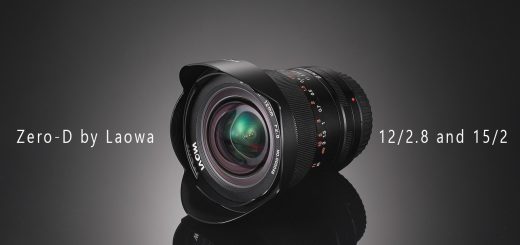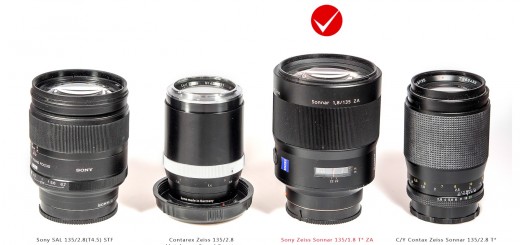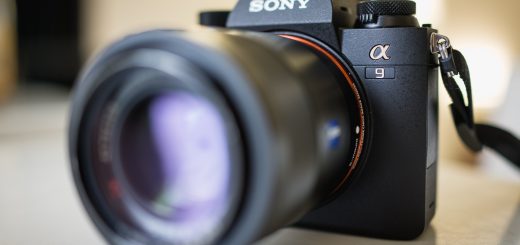Metabones Speed Booster Review (NEX 7) Part II – Canon TS-E 17 f4 L
Canon TS-E 17mm f4 L USM, Metabones Speed Booster (Canon EF to Sony E-mount) and Sony NEX 7.
There is ongoing debate on the forums between the “I like NEX because of the small size majority” and me. (Well, maybe few others :-))
The reason why I choose NEX had nothing to do with the size or weight. (It is welcomed addition, I admit).
I choose NEX because of the shortest flange distance, that allows use of almost all lenses ever produced and very good sensor especially in terms of DR. Later with the NEX 7, it comes also ultimate resolution bellow MF. NEX 7 has higher pixel density than my Nikon D800E.
My problem with this “Size is all that matter majority” is only one – Sony. Because of the mass market consumers pressure on the size and weight, Sony involved those extensive software corrections in their .arw files, that used to be RAW files, not so long ago.
Beside the fact, that I like to be in control of the things, there is yet another consequence. (And that one is also on purpose, I am sure.)
Lens testing is loosing its sense, as we can only test certain combinations of camera and its firmware, lens and its firmware and RAW development software (in a current edition). That makes too many variables and combinations to allow objective qualification of the lenses and their optical performance.
And this apply to the lens adapters too of course. So, while the following shots are taken with Sony NEX 7 and firmware 1.01, and developed in LR 4.3, results with any other camera, or with NEX 7 with the original firmware (1.00) might be completely different.
Is there any reason to reed this review than? I don’t know… But if you are all about the size, I am sure you can spend your time much better, because this combination will not fit in your pocket.
(Recently I had been reading one dicscussion on DPR NEX forum, about the reason for buying new Sony SEL 20mm f2.8 pancake, for 360 USD instead of Sigma 19 f2.8 EX DN E for recently 139 USD (or 99 USD if bought in bundle with Sigma 30 f2.8).
One of the members, after deep analyze that included – nicer color finish of the barrel, and overall more “cool” look, if I understood well, said that his jacket pocket is made for pancake lenses, and therefore he will certainly buy new Sony. The size difference between the lenses is some 25 mm shorter, BTW.)
For me (and those few others) for whom the size is not everything, or the bigger the better if you like, Sony NEX 7 with Canon TS-E 17 f4L and Speed Booster, sounds great. Landscape but even more architecture photographers, that are after high resolution, optical correction and convenient stitching capabilities of TS-E 17 f4L, probably should pay attention. If it deliver, what Metabones SB promise.
Before I post first image, let me say, that I have and will make much more with this combination. I was impatient to see how it performs, and I wanted to see, how does it compare to Canon 5D Mark II, but unfortunately my battery in Canon was ready to die, and without a charger at work, I could only made few snaps before full dark-out.
Here is the direct comparison. Image are somewhat reduced, but if you enlarge them to the original size, I believe that you would still be able to see the differences.
 |
| Comparing Sony NEX 7 with Metabones SB vs Canon 5D MII, both with Canon TS-E 17 f4 L at f5.6 |
I should notice, that because of fast change of the lighting conditions, I was not able to calculate real exposure difference (or Speed Boost), but I will do that when I get to the studio and could control lighting.
The FL lens referred to the Sony NEX 7 was 11.9mm, and maximum aperture was listed as f2.8. As you can see, TS-E 17 f4L is a bit tighter than on Canon 5D MII. As the Metabones SB magnification is listed to 0.71, it should refer to 12.07mm on Sony APS-C, or to 18.1mm FF equivalent. I would say, that difference in FL is slightly bigger than 1,1mm but that can be also due to the different physical size of the systems. All in all, it is close enough.
LR 4.3 basic info.
 |
| Sony NEX 7 with Metabones SB and Canon TS-E 17 f4 L at f2.8 |
Let’s look at some 100% crops
 |
| Comparing Sony NEX 7 with Metabones SB vs Canon 5D MII, both with Canon TS-E 17 f4 L at f5.6 100% Crops |
This crops certainly shows one thing – Metabones SB does what it promised to do. All crops from Sony, shows slightly higher resolution than those from Canon. There is few Mpx more on Sony too, but I would say, that what we can see here, is a real lens performance booster effect. (Just a reminder, none of those shots was sharpened in post processing, beside standard LR 4.3 sharpening).
So far so good. Great. Fantastic. There is 1K USD APS-C camera that can do better than 2K + DSLR in terms of IQ. Where is the hook, you might ask?
If almost 700 USD is not enough big hook for you, there are few more…
The biggest one is overall more CA especially purple fringing.
Here are crops before and after correction at f2.8 and f8:
 |
| Sony NEX 7 with Metabones SB and Canon TS-E 17 f4 L at f2.8 and f8, CA and PF correction |
While stopping down doesn’t help to eliminate CA and PF, correction in LR 4.3 for both, is really trivial.
The second trade off is heavy vignetting at maximum shifts.
 |
| Comparing Sony NEX 7 with Metabones SB vs Canon 5D MII, both with Canon TS-E 17 f4 L at f8 Maximum shift problem |
This finding indicates, that designers pushed probably a bit hard on the projection circle at this FL. (Remember – one correction lens, that rule them all?)
Maybe Brien can give as more reasons behind (if he ever read this article), but it could be that they had to go over, because of lack of space related to highest possible refractive index (before they lost control over CA and PF). That would also correspond to the vignetting at longer focal lengths, where the projection circle is also smaller than it should be.
The smaller projection circle could result in the corner smearing, but with a lens set to 0 shift, I certainly couldn’t see any more smearing compared to Canon output.
To my eyes, there is also increased barrel distortion. TS-E 17 is a lens with a minimum distortion for UWA, and I will have to make more intensive test, but so far it seems that distortion might be also boosted with SB.
Finally, let’s see if stopping down the lens, improves resolution.
 |
| Sony NEX 7 with Metabones SB and Canon TS-E 17 f4 L at f2.8, f4 and f5.6. 100% crops. |
As you can see, stopping down result in better overall result. At f5.6 image has better resolution across the frame and light fall off is significantly reduced. But, image at f2.8 is still very good, and with some post processing, it is more than usable.
I have to make studio resolution, exposure test, fall off test, color cast test and NEX 7 firmware 1.00 if needed, but so far, Metabones SB didn’t disappoint. (Once and if, I manage to adjust infinity focus with my favorite lenses).
TS-E 17 combination comes out very attractive. One of the best Canon UWA lenses gets
a new body to shines on, and could be used at almost one f-stop faster resulting shutter speed.
This, in combination with very good high ISO performance of NEX 7 (and all other NEXes), makes it kind of revelation for the architecture photographers.
How’s about Astro photography? Instead of f 4, there is now welcomed f2.8 high image quality 17mm lens.
Once uploaded, you should be able to download RAW (well in Sony case, something alike) files from this link – Original Files, but be patient, as I don’t know if it will work. If you succeed, feel free to do with images whatever you need for your evaluation, but don’t publish them without my permission, please.
Link to the part I – Metabones Speed Booster Review (NEX 7) Part I Introduction
Link to the part II – Metabones Speed Booster Review (NEX 7) Part III – Canon EF 50 f1.2 L USM
Next lens to jump on booster will be Canon EF 50 f1.2L. Meanwhile, here is one Bokehlicious shot from 94.5 f1.4 🙂
















I guess you dont pay VAT directly? 😀
You sorta found what I saw on most pics. Bit of CA/PF and bit more distortion. Kinda logical as it “compress” bigger frame to smaller, which is pretty much what regular wide-angle lens does. And I think CA/PF is there for same reason. Anyway neither of these is deal killer and both can be fixed in SW. And having same great wide-angle lens for two systems is something which no SW can fix. 🙂 And that makes this thing worth it. Even tho 700 USD is a lot..
I would say its worth it. Would be interesting to test it with some 24mm. I guess it was designed for 18-35 range with best results somewhere in middle. But just guess, might be wrong.
Btw. you are not alone with your attitude towards mirrorless. I like it for exactly same reasons, just really wish they finally made regular FF. 😀 There will be one from Leica, but that will be tiny bit too expensive (Leica M240 or just “M”).
Guess you have typo last number, it should be 54,5 f1.5 (50/1.2L on SpeedBooster).
Well, nice article, looking forward for next part.
Hi Corwin and Thanks for the feedback.
I will check that typo later, as I am falling dead now, after some tough work in the office…I guess there are much more, as my English is really weak anyway. As a member from DPR forums has in its sign:
“My english is poor.Try to Understand”
I briefly tested it SB with the EF 24 f1.2 L II, and first impressions are positive.
I agree with you, some of the lenses, would deserve such a price if only with them adapter will work. It would still be cheaper than the FF body. And thinking of it, I still have more resolution with NEX 7 in respective crop, than I would be able to get from, Nikon D800E (well in theory).
But what makes me completely mad, are those cooked RAW files from NEX 7 and fw 1.01.
I just can’t stand it, and am so disappointed and angry, that I would most probably switch the boat soon. It is because, they simple chooses that route, and if they come with a FF, expect even more of those to happen. Goodbye RAW, welcome Artificial, Resolution Waste files.
P.S.
Don’t mention VAT… we all have our little secrets 🙂
Oh, you mean description of the last shot as a typo? No, that is correct one 🙂 It’s 135 f2 L.
Yea I wasnt much clear thinking at that 1 AM, makes sense with 0.7x. 🙂
I understand that cooked RAW hate. One of reasons why I went back to dSLRs after 1 year encounter with Panasonic G1. Tho in that time there wasnt much competition.
Sony will probably follow route of SW corrections. It depens just how much effect it will have on adapted lens users. Samsung is probably planning something too, but they are pretty much same with cooking RAWs.
Maybe in some very distant future Nikon will make some FF mirrorless aswell, with uncooked RAWs. 😀
PS:
To máš dobré, já naposled platil DPH i u dárku. 🙂
Hi,
at first I had same disappointment with SB. Having all of the Zeiss ZE lenses and few expensive from Canon and every single lens wasn’t able to focus in infinity. After turning back element on SB for almost full circle anti clockwise everything is ok. Especially good is 16-35L II. Even auto focus on that lens is usable on NEX-6. Being 5D Mark III owner it is hard to compare these two cameras. But on video camera Sony NEX FS700 Speed Booster is must have. Now I don’t need my 5D3 for wide shots. And SB is very slow in establishing connection with Zeiss ZE lenses on NEX-6. Sometimes it takes up to 60 seconds for camera to show picture on display. Anyway, expensive but very usable piece of gear.
All best,
Mido.
Hi,
thanks for the feedback. Interesting to hear that you had the same problem, at least I know, that I am not alone. I did the same adjustment and kudos to Metabones for making it possible. I turned well over 180°, but will have to test it little more to be 100% sure. The amount of rotation makes me bit confused though… It is well beyond some production tolerances…
I sold my 16-35 II(I have all FL covered, and also Nikon D800E with 14-24, so it was a bit of luxury to keep it, but EF 24 f1.4 L II and 21, 28, 35 Zeiss ZE, they all works fine now. AF, can be used for some static subjects, but I still can be faster with a hand.
I also experienced black screen with Zeiss 21 ZE, when mounted. I didn’t wait 60s, so thank you for mentioning it, but I simply took of the lens and mount it back again, while holding function button on the SB, to enter advanced MF mode. In that mode, it worked every time from the beginning.
Enjoy SB, and if you find something more, let me know.
after looking for an answer for weeks I found it here!!
I wrote 3! mails to metabones and never got an answer. I was asking, if the adapter supports the electronic aperture. I have the Nikkor 24mm PCE with electronic aperture and it is not working on any adapter (jet). Here I see, that the TS-E works, thanks very much.
I have the Nikon D3 and canceled the D800E. I decided after about 50 years SLR/DSLR to sell all my Nikon.
The Canon 17mm TS-E has been the only lens, that I was jealous to the Canon owners and with the Metabones I have the chance to use it now! 🙂
My only problem is solved now, as it works. Thanks again, Viktor.
When the FF NEX is coming, this lens with the normal adapter will be just great:)
BTW: what is SB?
regards
dierk
Hi Dierk,
Metabones SB means – Metabones Speed Booster, the adapter reviewed here. There is also Metabones Smart adapter, that allow control of electronic aperture of the Canon EF mount lenses, that has no optical elements and preserve original crop factor of 1.5.